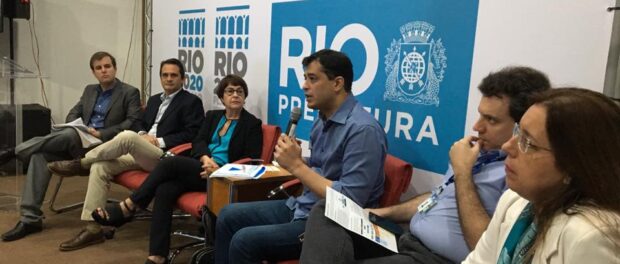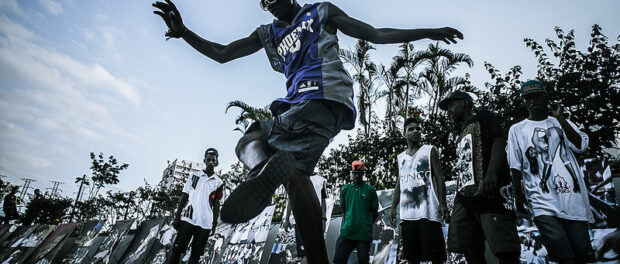
During a live broadcast on Band News to discuss Mayor Marcelo Crivella’s Strategic Plan, Rio de Janeiro’s Sub-Secretary of Planning, Aspásia Camargo, when asked about the role of cultural production in reducing inequalities and promoting security in favela territories, said: “Of one thing I’m sure: we will not have any culture in unruly areas [áreas sublevadas]. […] Areas revolted by violence, by murders, by unmanageability, by the militias” (around minute 30:00, Portuguese only).
https://www.facebook.com/bandnewsfmrio/videos/1788604517819545/
According to the dictionary, sublevada means “revolting, rebellious, unruly.” The choice to refer to favela territories by this term reveals a political position on the part of the City of Rio to view favelas as a space of irrationality and violence, and the statement itself legitimizes the continuity of actions that the City has been taking towards impeding cultural events in the favelas. An example of this was the creation in May of this year of a special commission linked to the mayor’s office to approve events with more than 1000 attendees. The new commission not only makes the organizing of cultural events more difficult by lengthening the process of prior consultation and increasing the number of licenses needed, but holds the right to veto events, even as they are taking place.
During a public hearing to discuss the city’s new Strategic Plan in the Tijuca neighborhood last Tuesday, July 26, the sub-secretary first denied that she had made such a statement, but throughout her speech she again stated that it is not possible to have cultural initiatives in areas where violence predominates. According to Camargo, the City of Rio is unable to mitigate this violence, which she attributed to the flow of weapons and drugs whose entry the federal government forces should prevent. But she also said that the City is acting to help these failed forces, including those of the state of Rio, to recover. This will be achieved by redirecting the work of the Municipal Guard towards ostensive policing.
“We know there is a huge list of things that were produced in Vidigal, were produced in Rocinha, are produced in other neighborhoods,” Camargo acknowledged. Cultural production in the favelas, however, is not limited to the past, as she seems to affirm, nor is it restricted to these two favelas of greater visibility in Rio’s South Zone. Favelas are still today and increasingly so spaces of cultural effervescence. Rio’s favelas have museums, theatre groups, literary festivals, film clubs, and libraries. They are the space of production and reproduction of samba, of rap, of funk, of jongo, of charme, of breakdance, of capoeira, of the passinho. They are the space of graffiti, of DJ battles and poetry slams. They are the space of a constant search for solutions and innovation, the space of reinvention, of the creative and solidarity economies.
By making such a statement, the City of Rio seems to want to go against popular demand and against the expected tendency to value and promote culture in favelas. The Strategic Plan lacks policies for the promotion of cultural artists and producers, it lacks strategies to decentralize cultural equipment from the city center and the South Zone to the western and northern sides of the city. But even if the City acts actively by putting up barriers to events or passively through the lack of incentive to and recognition of the cultural potential of favelas, this prophecy will not be fulfilled, because the favela is the incarnation of life that thrives despite the absence–and sometimes even in resistance to the presence–of the government.
Yes, we will have culture in the favela. And it will be through culture that residents will continue to resist, to live, to survive. And if the City knows how to channel efforts towards transversal public policies, cultural production will be able to generate income, employment, security, to nurture social bonds and self-esteem, and to reduce the gap between the formal city and the favela, implementing in regards to rights what the favela already is in practical terms: part of the city.

